First launched twenty-five years ago in October of 1985, NASA's Space Shuttle Atlantis is scheduled for its 32nd and final launch this afternoon (at 2:20pm ET). This launch - one of only three remaining missions left in NASA's Shuttle program - will deliver an Integrated Cargo Carrier and a Russian-built Mini Research Module to the International Space Station. Collected here are a series of photographs of Atlantis' recent activity, as it descended from orbit last November, landed, and was processed and prepped for today's final launch. (42 photos total)

At NASA's Kennedy Space Center in Florida, space shuttle Atlantis is outlined by spotlights at the Vehicle Assembly Building as it rolls along the crawlerway to Launch Pad 39A. Atlantis' first motion on its 3.4-mile trip was at 11:31 p.m. EDT April 21. The shuttle was secured on the pad at 6:03 a.m. April 22. (NASA/Amanda Diller)
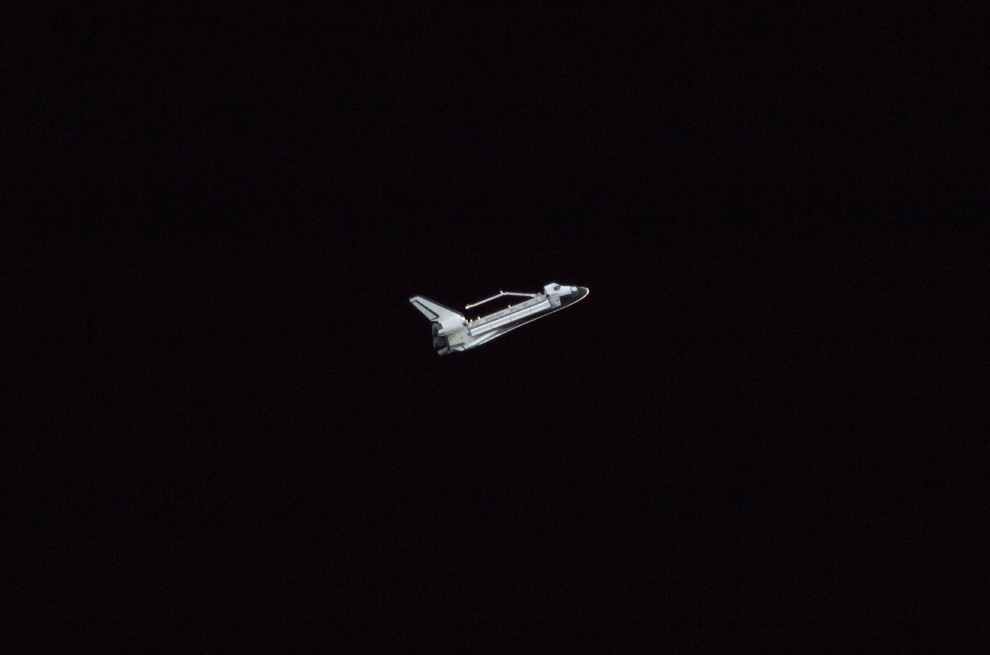
Late last year, near the end of Atlantis' previous expedition, a member of the Expedition 21 crew aboard the International Space Station photographed this view of Atlantis soon after the shuttle and station began their post-undocking relative separation, and the shuttle headed toward re-entry. (NASA) #
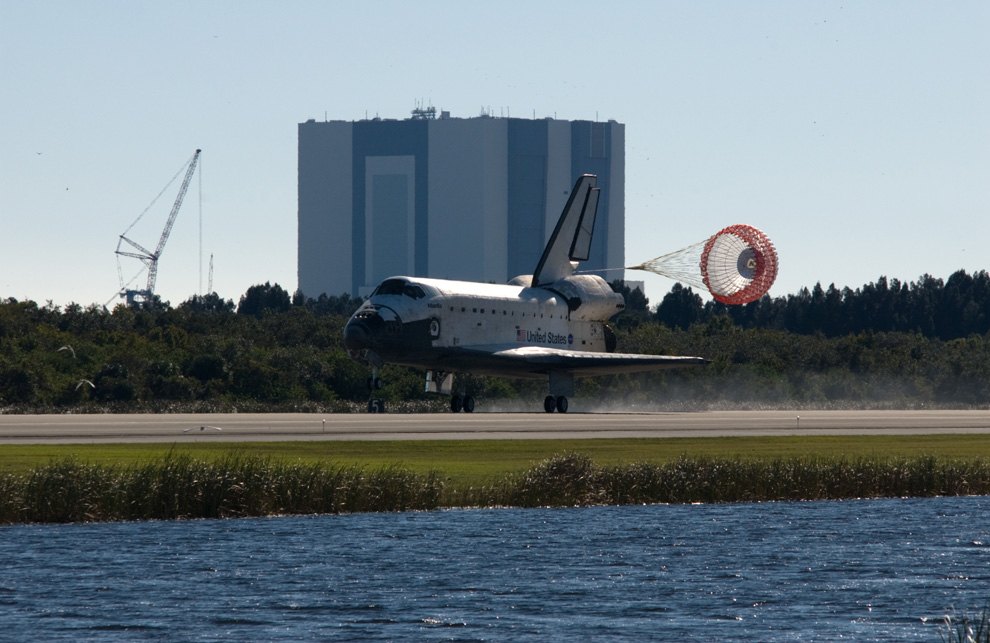
With its drag chute unfurled, space shuttle Atlantis touches down on Runway 33 at the Shuttle Landing Facility at NASA's Kennedy Space Center in Florida after 11 days in space, completing the 4.5-million mile STS-129 mission on orbit 171. In the background are the 525-foot-tall Vehicle Assembly Building and a crane being used to construct a new mobile launcher to support the Constellation Program's Ares I rocket. (NASA/Tim Terry) #
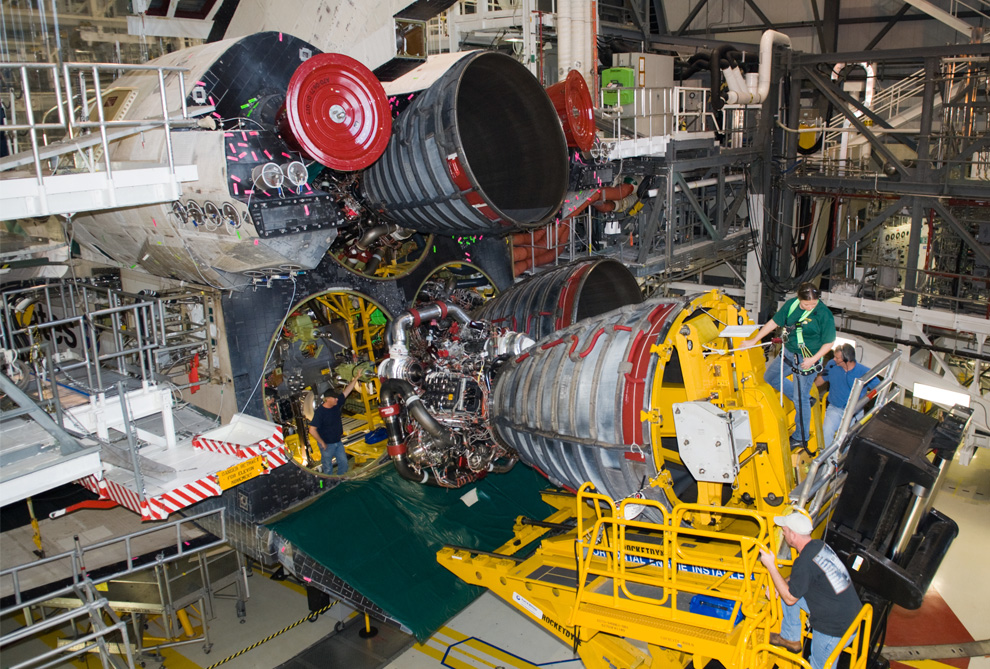
Soon after landing, Atlantis was moved to the Orbiter Processing Facility at NASA's Kennedy Space Center in Florida. Here, in Bay 1, one of three main engines has been removed using a specially designed Hyster engine lift. Inspection and maintenance of each main engine is standard procedure following a shuttle mission. (NASA/Glenn Benson) #
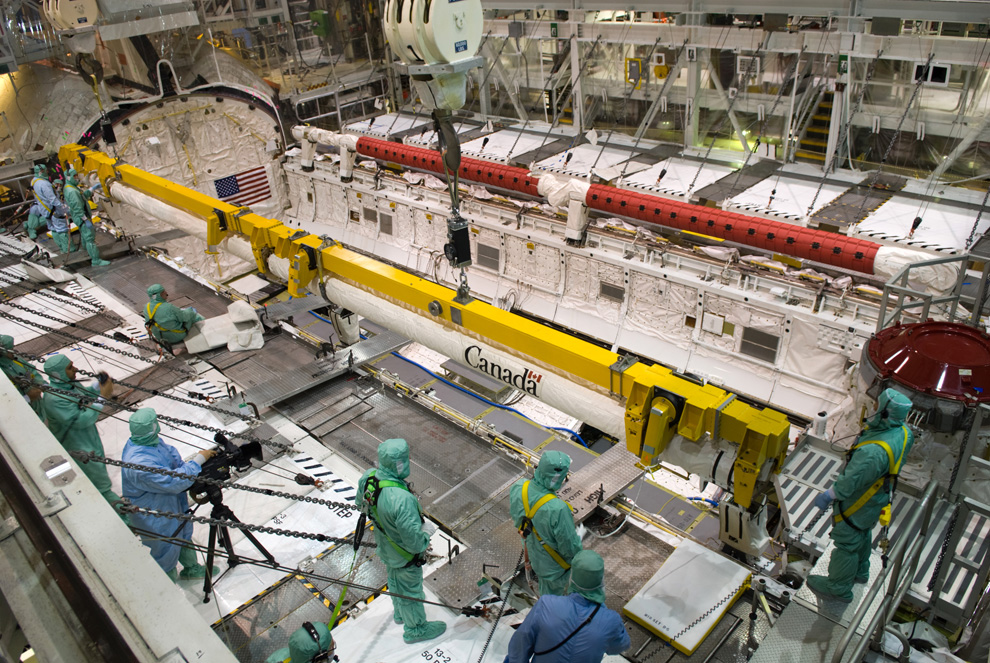
In Orbiter Processing Facility 1, technicians prepare to install the orbiter boom sensor system, or OBSS, into space shuttle Atlantis' payload bay. The OBSS' inspection boom assembly, or IBA, is removed from the arm every other processing flow for a detailed inspection. After five consecutive flights, all IBA internal components are submitted to a thorough electrical checkout in the Remote Manipulator System Lab. The 50-foot-long OBSS attaches to the end of the shuttle's robotic arm and supports the cameras and laser systems used to inspect the shuttle's thermal protection system while in space. (NASA/Jim Grossmann) #
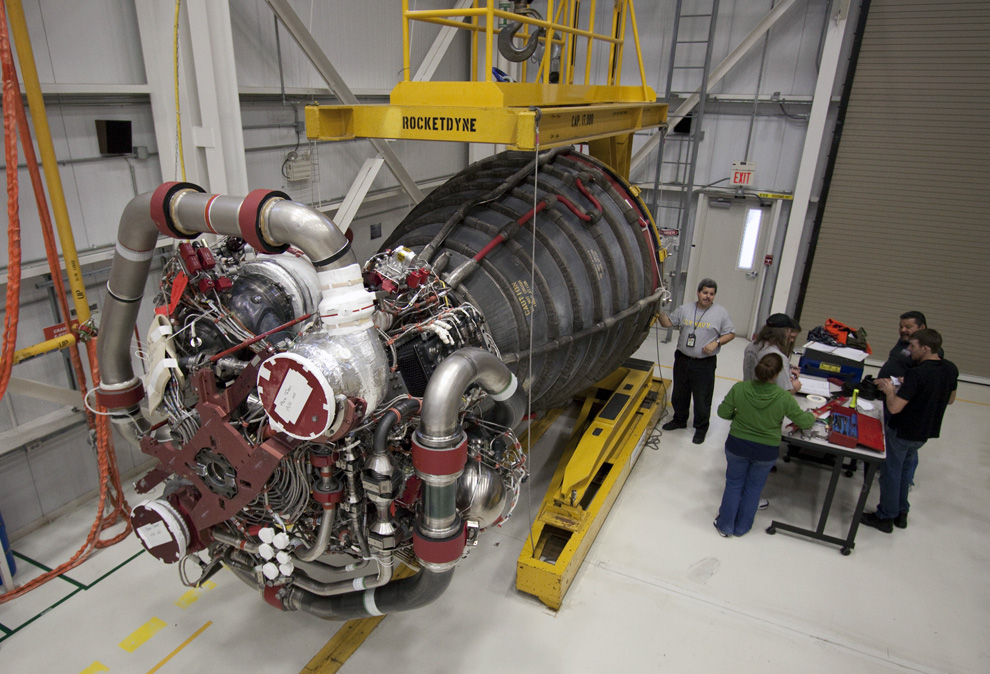
In the Space Shuttle Main Engine Processing Facility, a space shuttle main engine is lifted from its work stand toward a transporter for its move to Orbiter Processing Facility-1, the hangar in which space shuttle Atlantis is being processed for its upcoming STS-132 mission. A main engine is 14 feet long, weighs approximately 7,000 pounds, and is 7.5 feet in diameter at the end of the nozzle. (NASA/Troy Cryder) #

United Space Alliance senior aerospace inspector Ray Cox verifies that no foreign object debris or contamination was introduced inside the window cavity conditioning system manifold before it is installed on space shuttle Atlantis. Obstructions or contamination could cause damage to the system's filters and check valves or change the airflow in the system. The manifold stabilizes the pressure between the shuttle's window panes during ascent and descent and prevents condensation from forming on them during flight. Atlantis is being prepared for its upcoming STS-132 mission. (NASA/Kim Shiflett) #
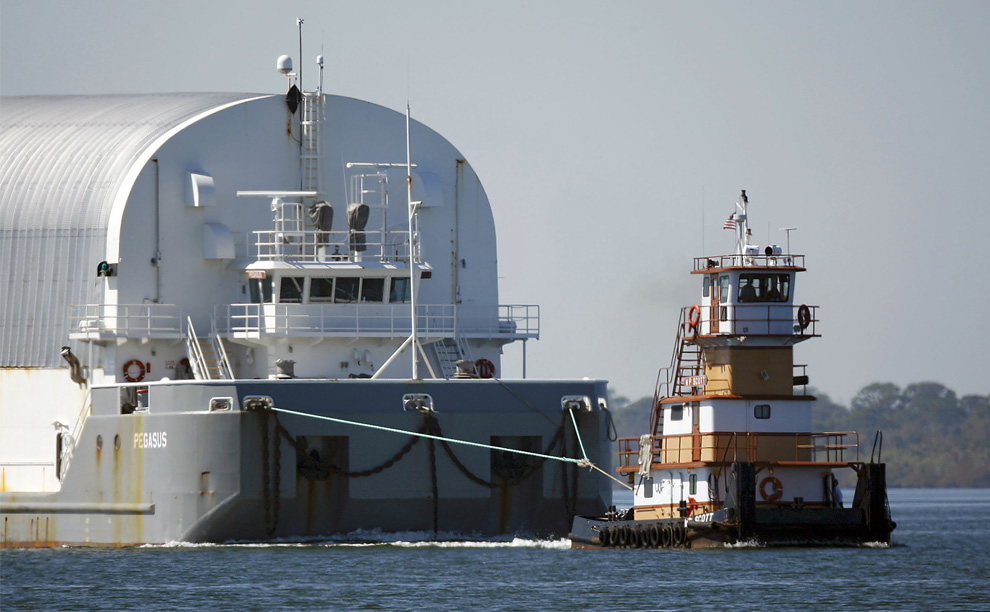
The Pegasus barge carrying External Tank-136 arrives near the turn basin at Kennedy Space Center in Florida, from NASA's Michoud Assembly Facility near New Orleans. ET-136 will be used to launch space shuttle Atlantis on the STS-132 mission to the International Space Station. (NASA/Rusty Backer) #

In Orbiter Processing Facility-1 at NASA's Kennedy Space Center in Florida, members of space shuttle Atlantis' STS-132 crew participate in training activities during the Crew Equipment Interface Test, or CEIT, for their mission. Here, Commander Ken Ham familiarizes himself with the layout of the shuttle's cockpit. CEIT provides the crew with hands-on training and observation of shuttle and flight hardware. (NASA/Kim Shiflett) #
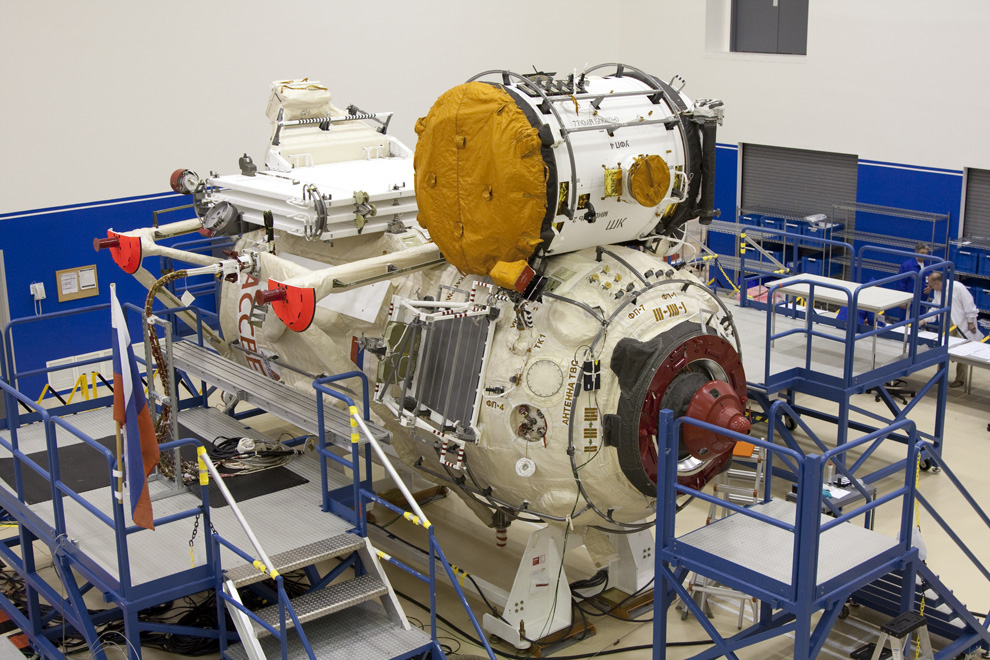
A media event was hosted by NASA and the Russian Federal Space Agency, Roscosmos, to showcase the Russian-built Mini-Research Module-1, or MRM-1, in the Astrotech payload processing facility at Port Canaveral, Florida. Supplies and other cargo have already been installed into the MRM-1. The module is on display for the media before its transport to the Space Station Processing Facility at NASA's Kennedy Space Center. The six-member crew of space shuttle Atlantis' STS-132 mission will deliver an Integrated Cargo Carrier and the MRM-1, known as Rassvet, to the International Space Station. The second in a series of new pressurized components for Russia, MRM-1 will be permanently attached to the Earth-facing port of the Zarya control module. Rassvet, which translates to "dawn," will be used for cargo storage and will provide an additional docking port to the station. (NASA/Dimitri Gerondidaikis) #
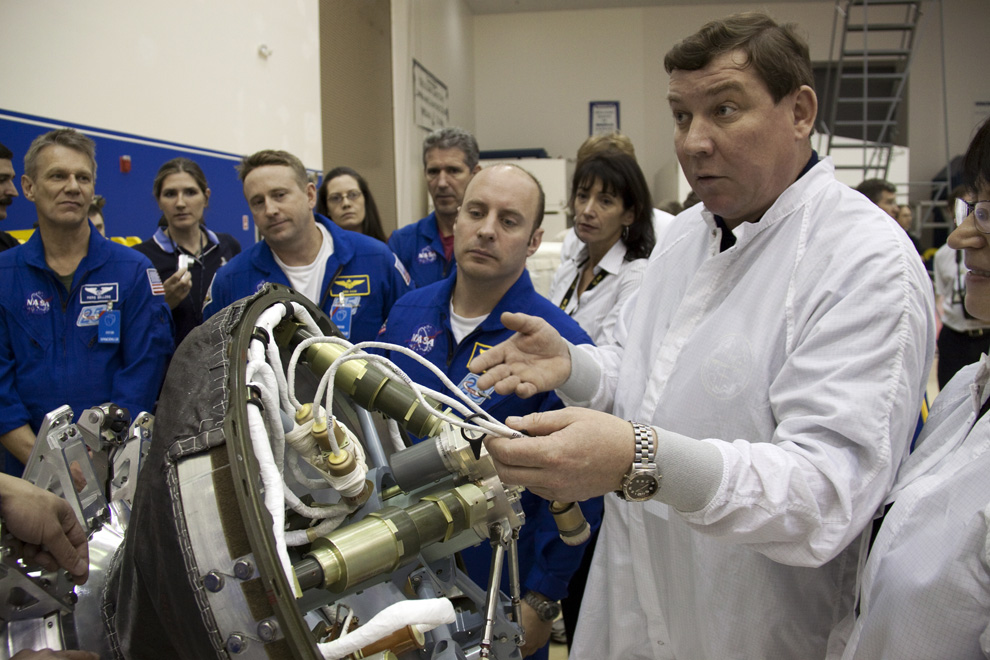
At the Astrotech payload processing facility at Port Canaveral in Florida, Sergey Kireevichev, right, of the Gagarin Cosmonaut Training Center, instructs members of the STS-132 crew on the design and operation of the docking mechanism for the Mini-Research Module during their crew equipment interface test, or CEIT. From left in the blue flight suits are Mission Specialist Piers Sellers, Commander Ken Ham, and Mission Specialists Michael Good and Garrett Reisman. (NASA/Troy Cryder) #
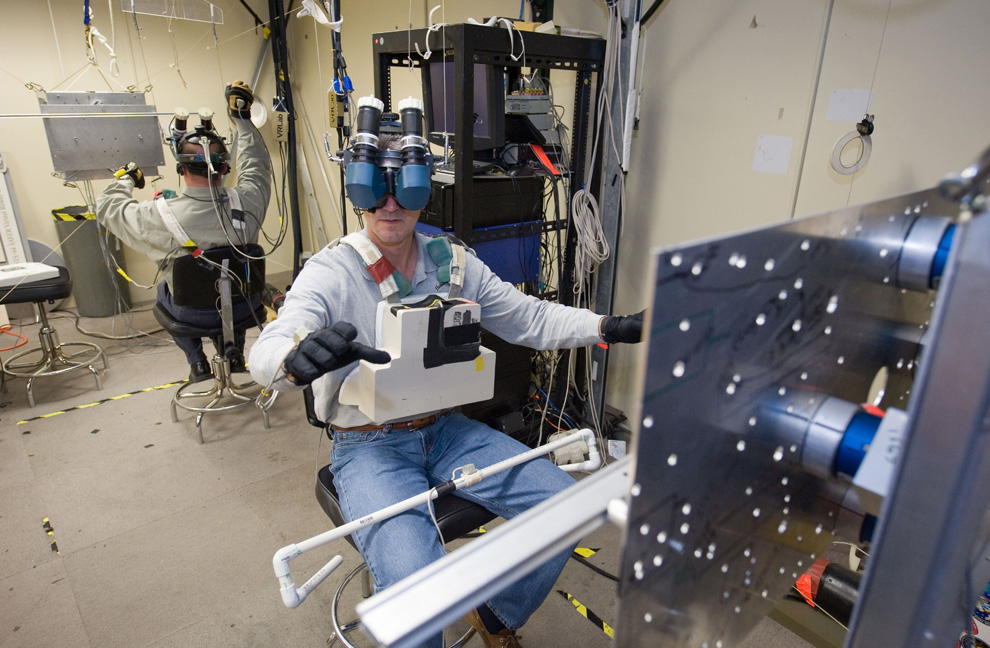
Astronauts Michael Good (foreground) and Garrett Reisman, both STS-132 mission specialists, use virtual reality hardware in the Space Vehicle Mock-up Facility at NASA's Johnson Space Center on January 28th, 2010, to rehearse some of their duties on the upcoming mission to the International Space Station. This type of virtual reality training allows the astronauts to wear a helmet and special gloves while looking at computer displays simulating actual movements around the various locations on the station hardware with which they will be working. (NASA) #
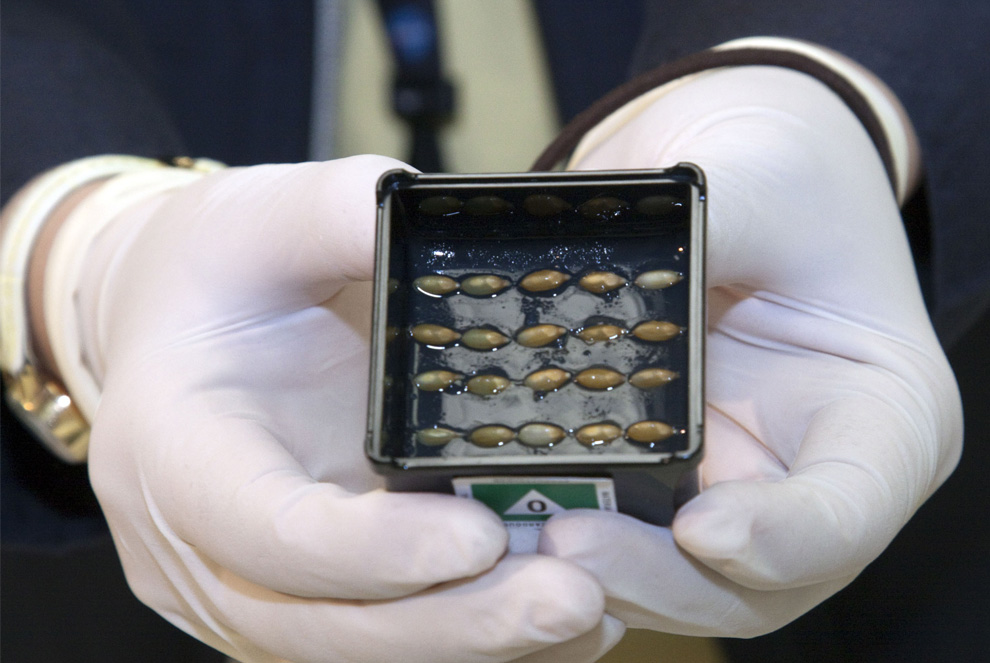
In the Space Station Processing Facility at NASA's Kennedy Space Center in Florida, a Japan Manned Space Systems Corp. scientist prepares the Japan Aerospace Exploration Agency's ferulate formation experiment for its flight to the International Space Station aboard the STS-132 mission. Expedition crew members aboard the station will test whether microgravity modifies ferulic acid in rice seedlings, thereby decreasing the mechanical strength of cell walls. (NASA/Jack Pfaller) #
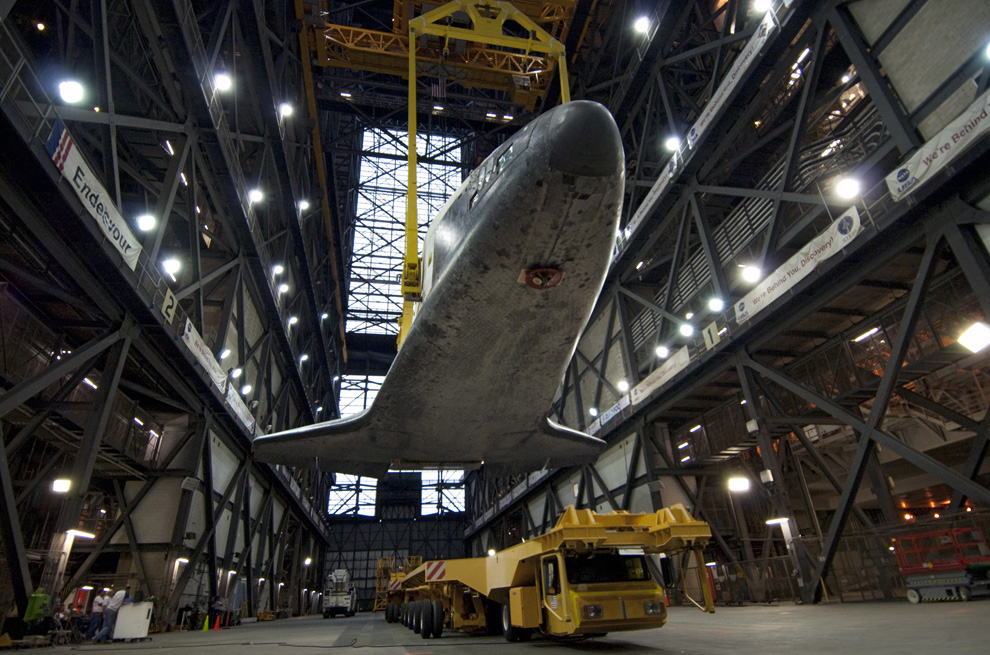
In the Vehicle Assembly Building at NASA's Kennedy Space Center in Florida, space shuttle Atlantis is lifted above its transporter during its move from the transfer aisle to High Bay-1. In the bay, Atlantis will be attached to its external fuel tank and solid rocket boosters in preparation for the upcoming STS-132 mission. (NASA/Cory Huston) #
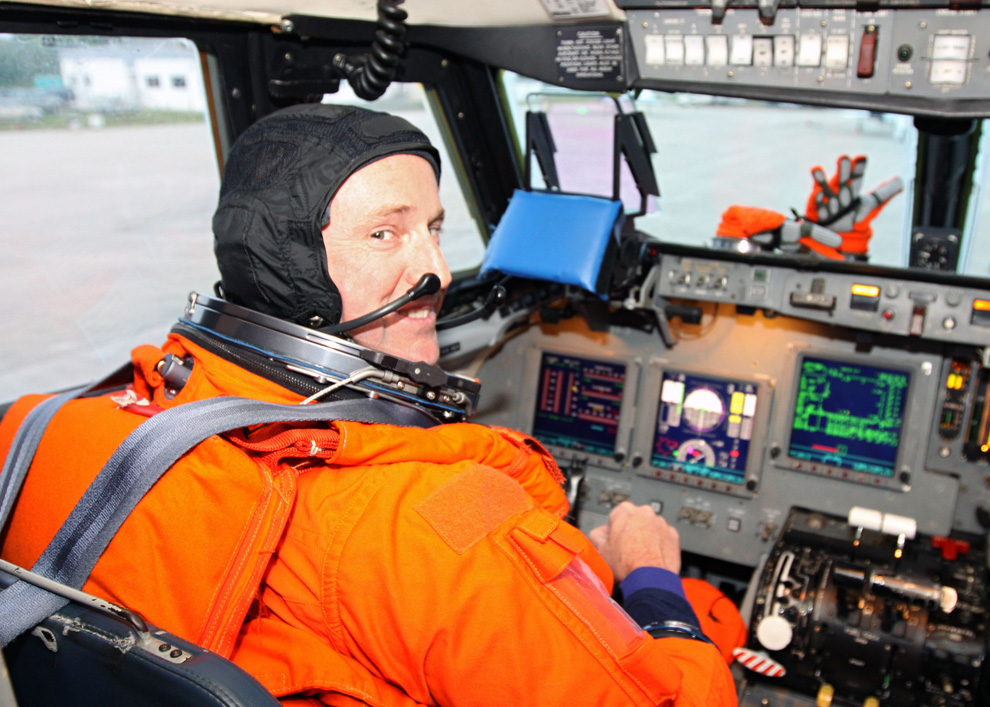
At the Shuttle Landing Facility at NASA's Kennedy Space Center in Florida, STS-132 Commander Ken Ham gets settled in the cockpit of a Shuttle Training Aircraft to practice touch-and-go landings. The Shuttle Training Aircraft is a Gulfstream II jet, modified to handle like the space shuttle. (NASA/Troy Cryder) #
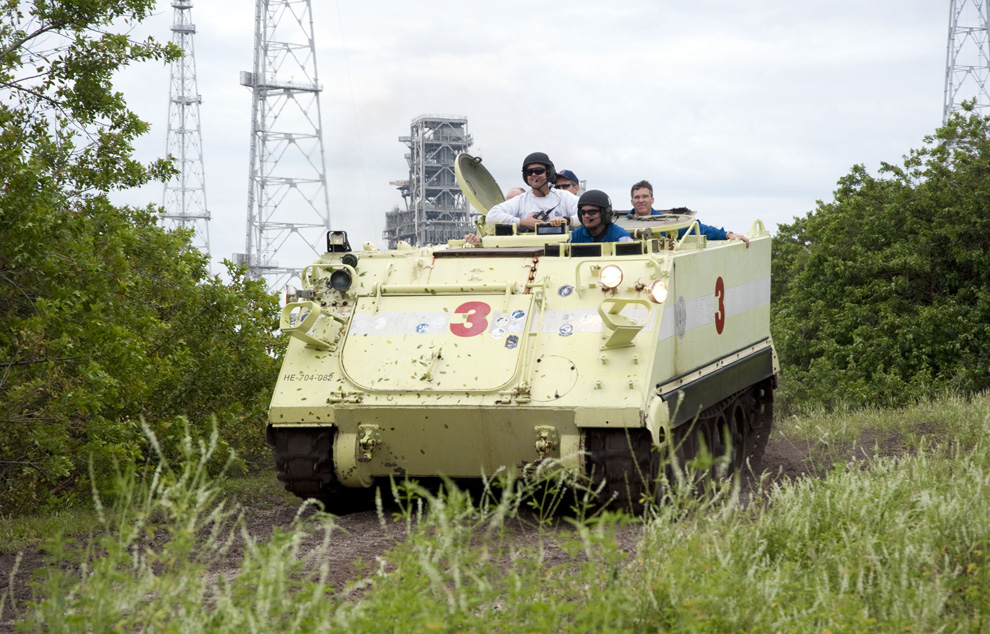
At NASA's Kennedy Space Center in Florida, STS-132 Pilot Tony Antonelli takes his instructor, Battalion Chief David Seymour, at left, for a ride in an M-113 armored personnel carrier during driving practice. Also along for the ride is Mission Specialist Steve Bowen. An M-113 is kept at the foot of the launch pad in case an emergency egress from the vicinity of the pad is needed. (NASA/Kim Shiflett) #
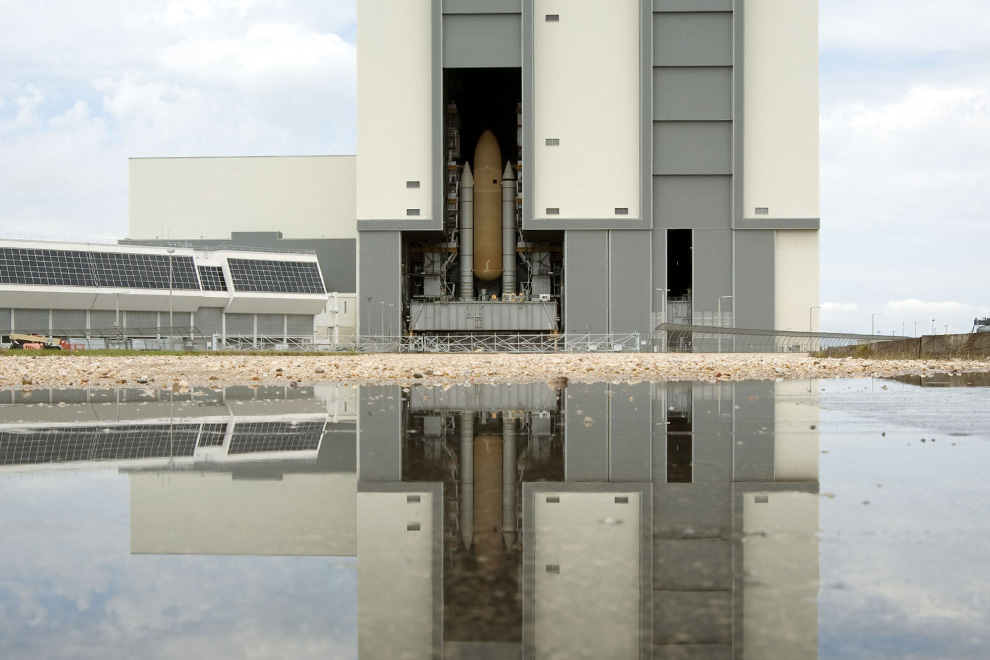
Water stands on the crawlerway outside the 52-story Vehicle Assembly Building at NASA's Kennedy Space Center in Florida, where space shuttle Atlantis awaits its move to Launch Pad 39A. Thunderstorms that passed over the center around 4 a.m. made the crawlerway too wet for the massive crawler-transporter to carry Atlantis the 3.4 miles from the VAB to the pad. (NASA/Kim Shiflett) #

Space Shuttle Atlantis astronauts fly over the shuttle landing facility in their T-38 jets at Kennedy Space Center, May 10, 2010 in Cape Canaveral, Florida. The Atlantis crew were preparing for their launch, scheduled for launch May 14, to the International Space Station. (Matt Stroshane/Getty Images) #
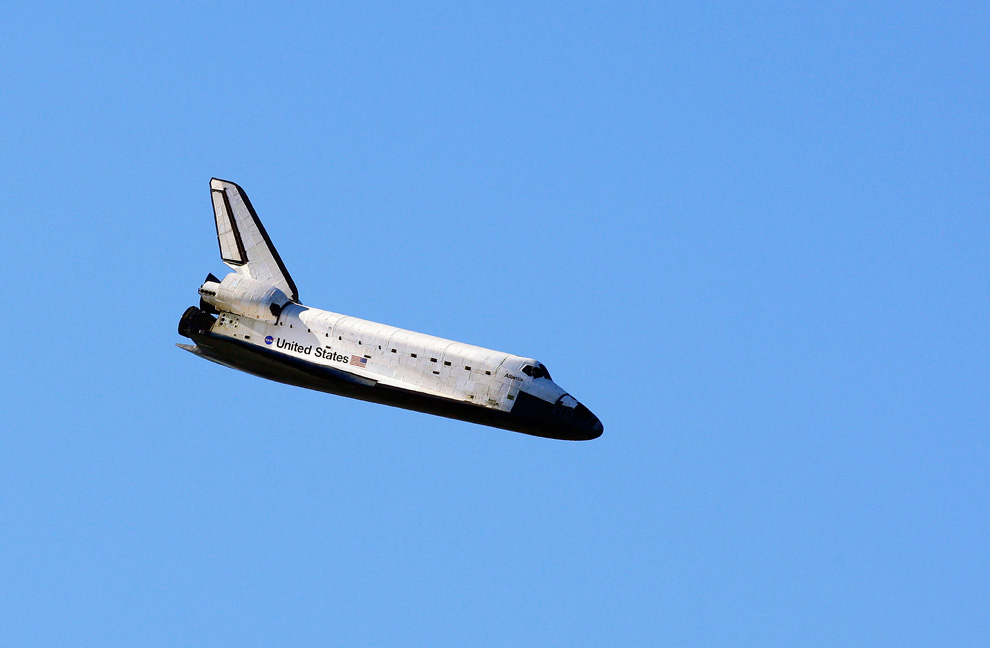


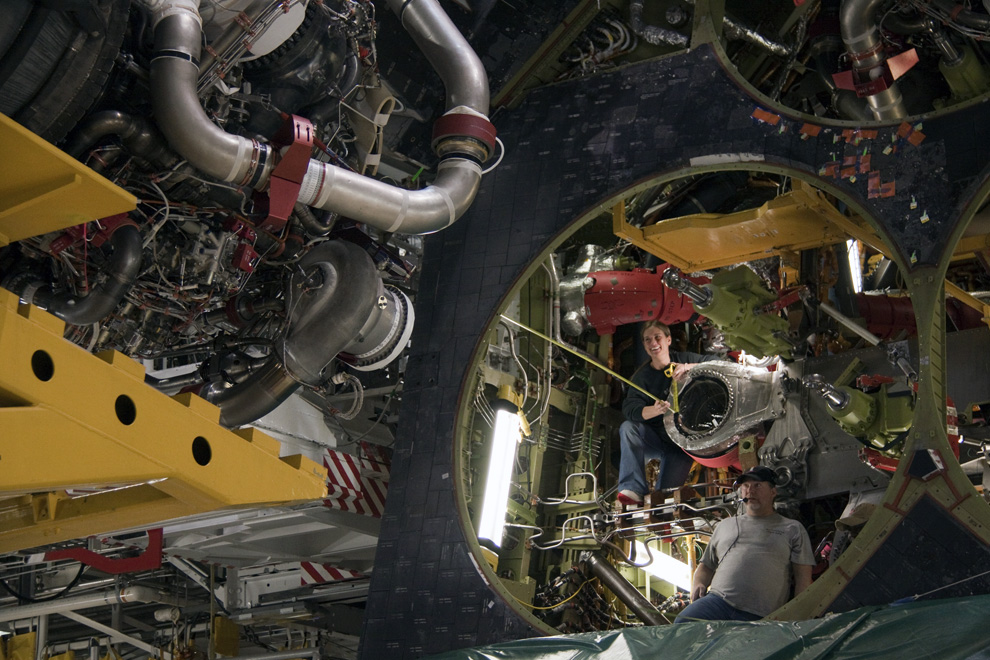
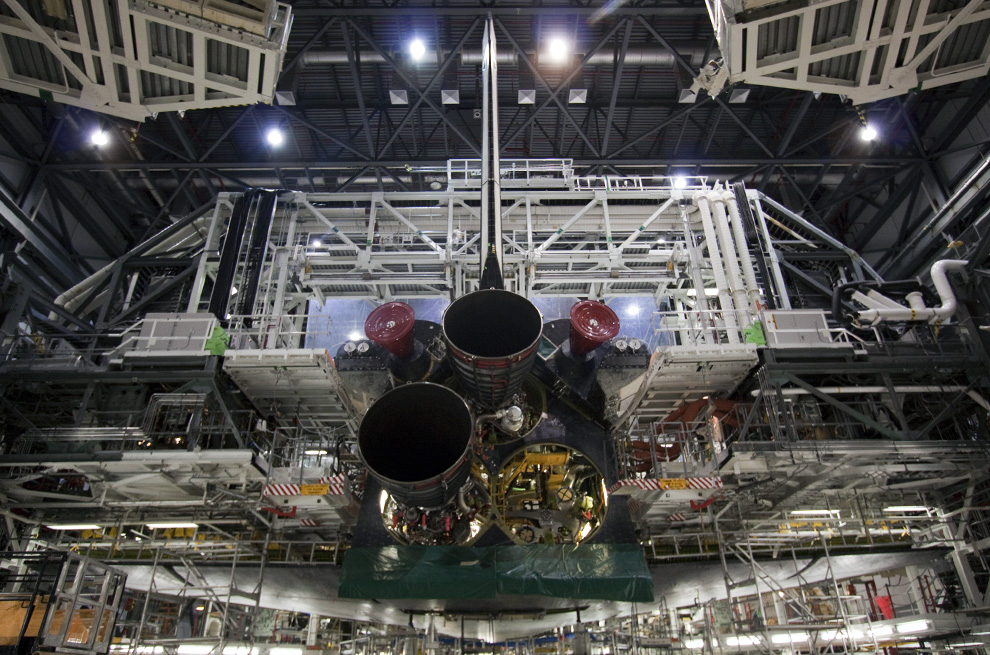
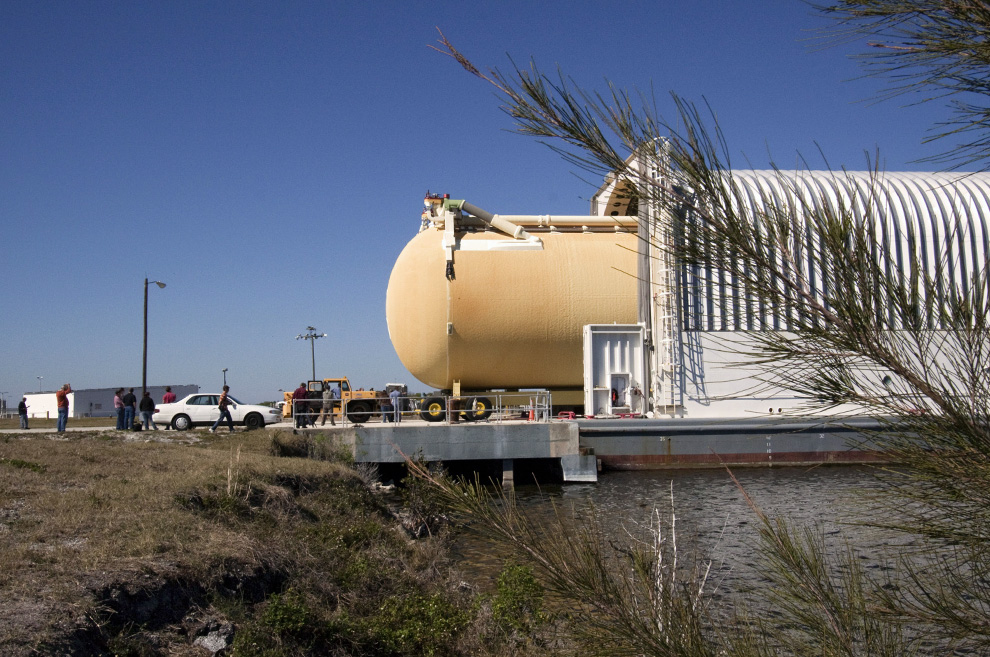
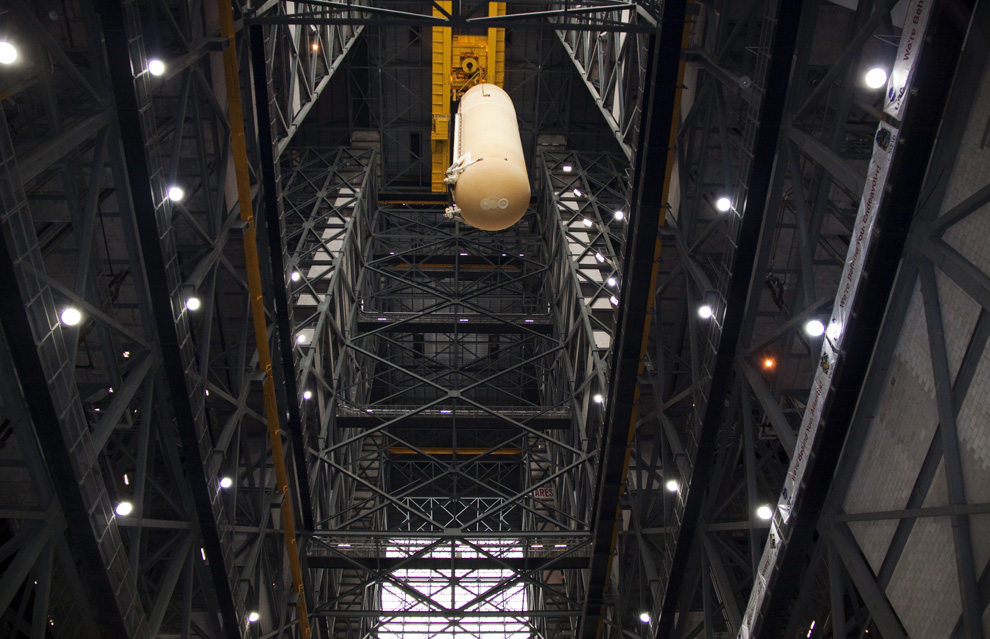
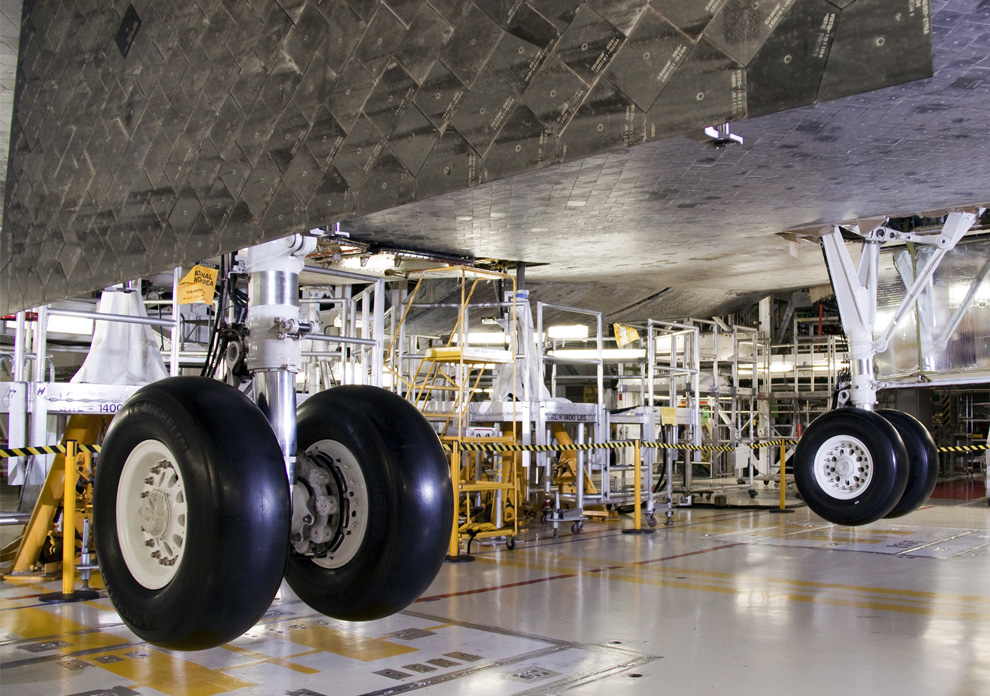
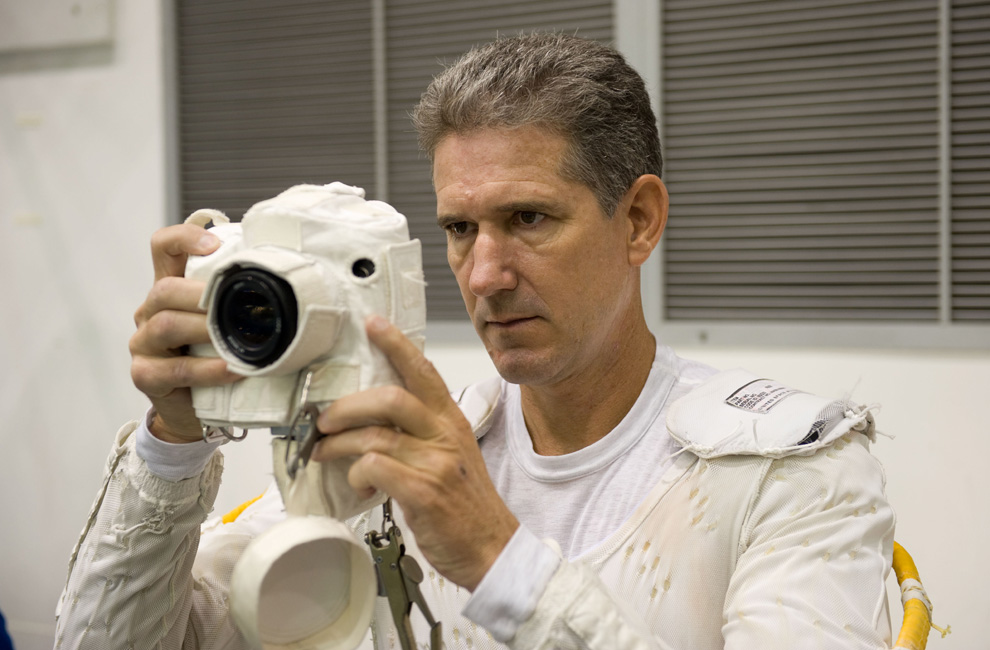
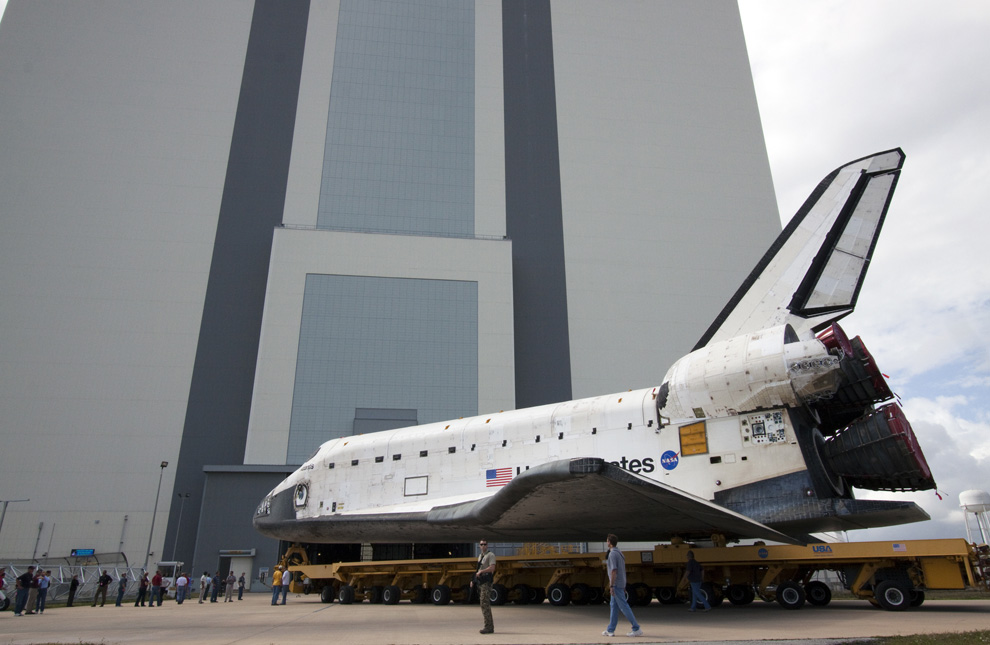
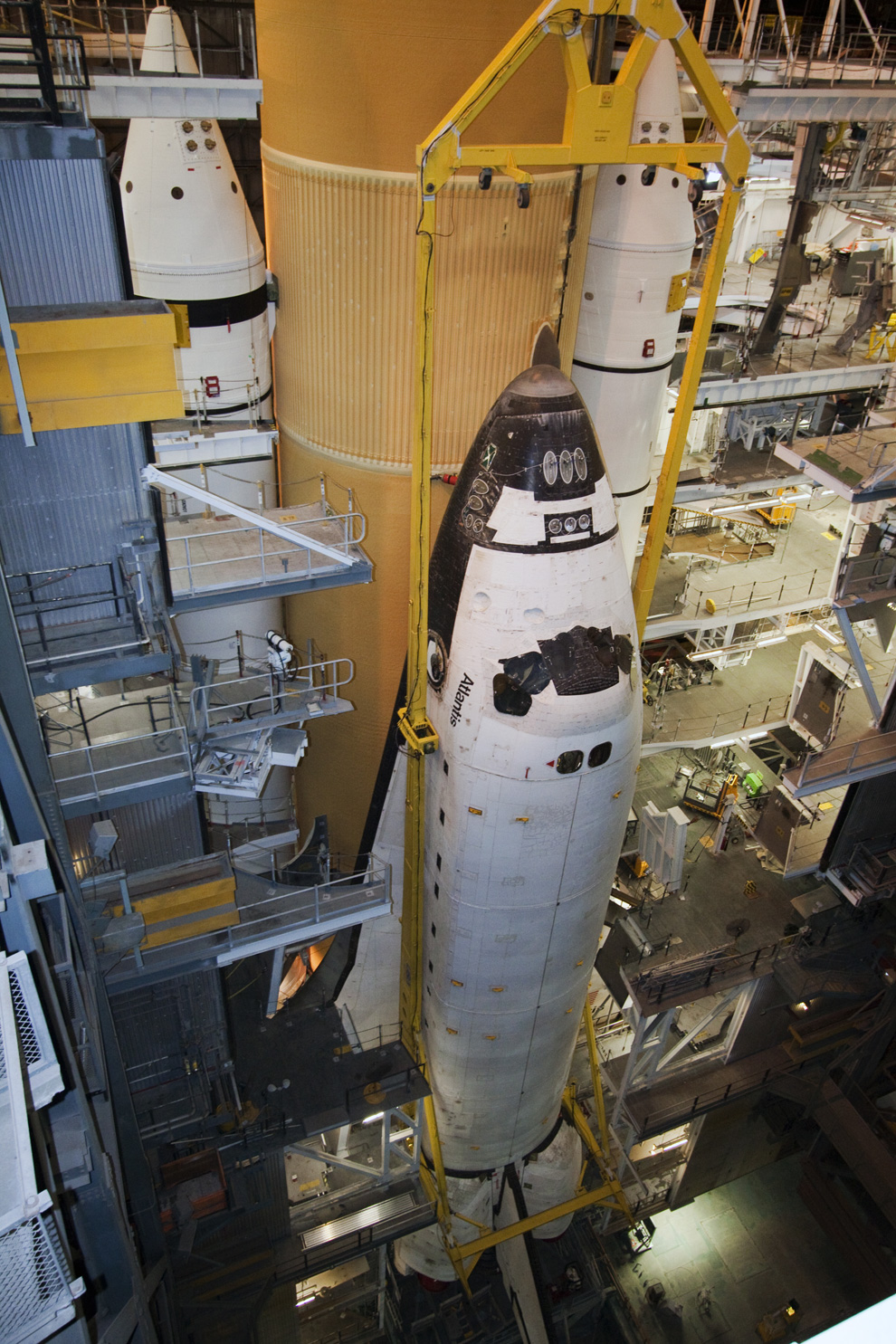
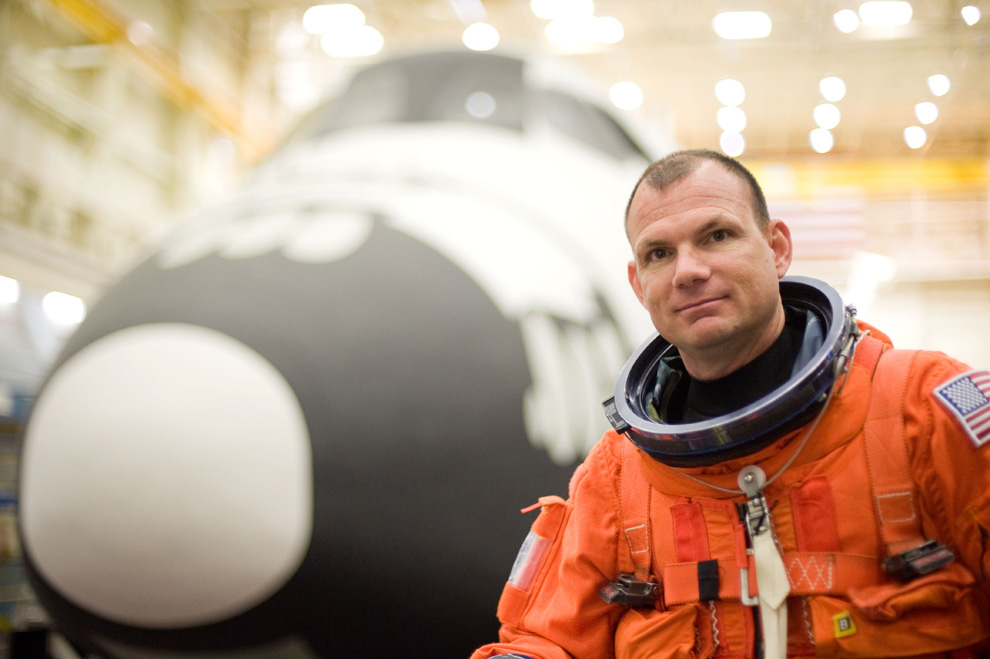

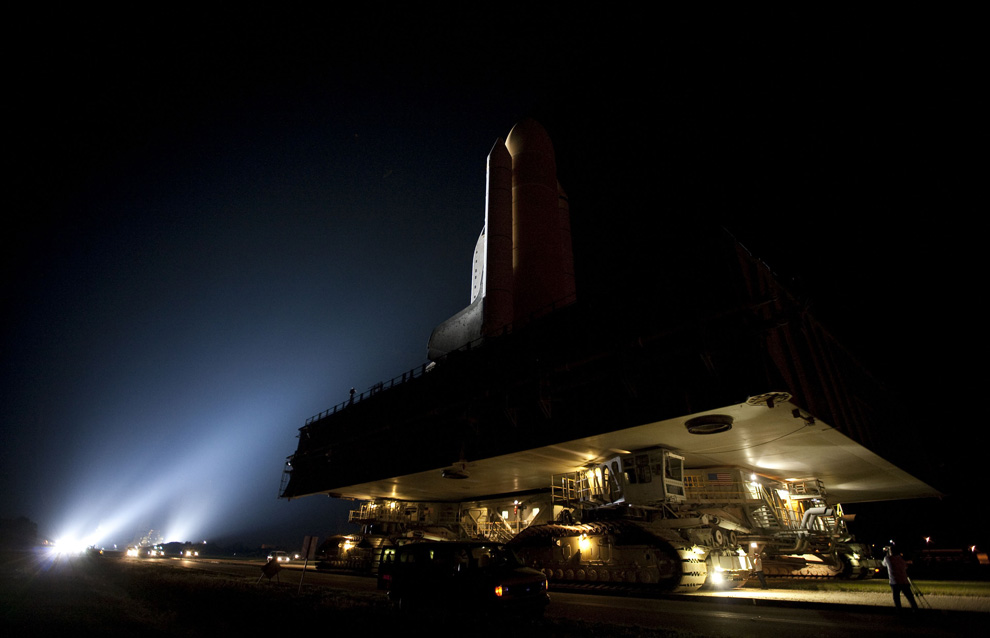
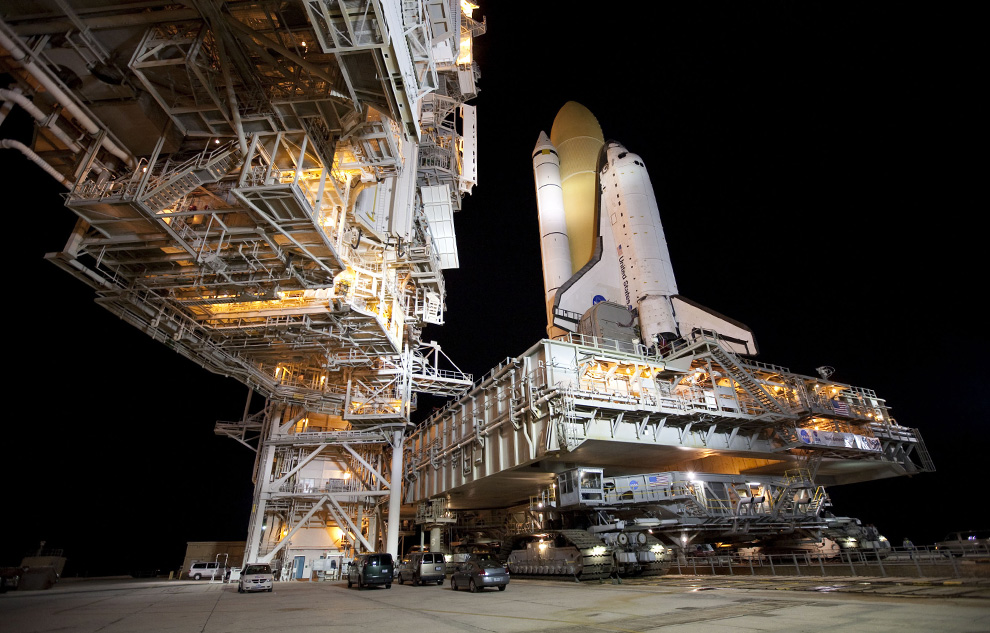
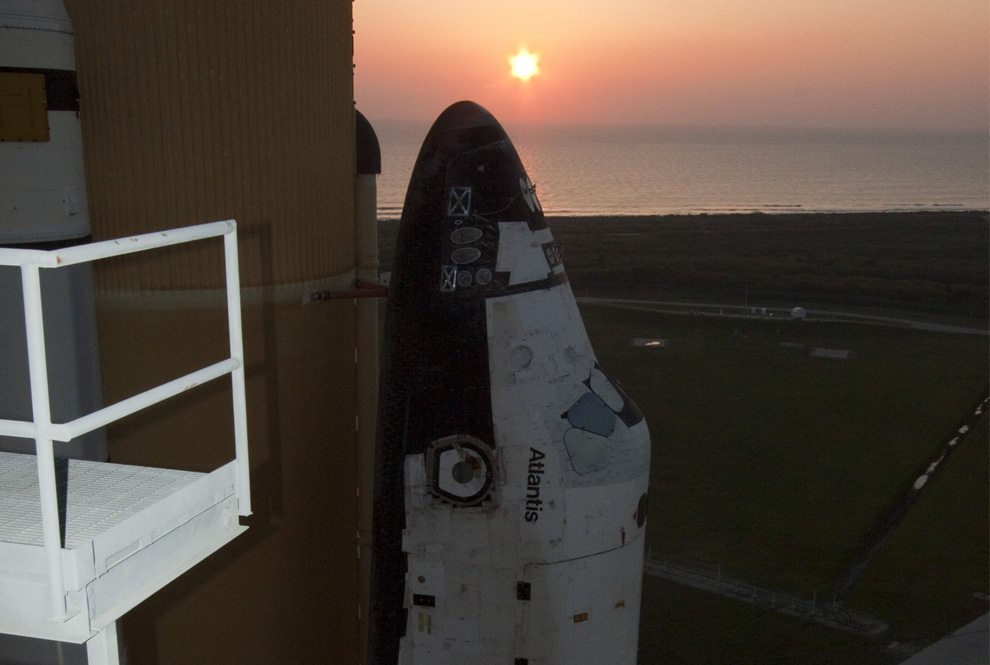
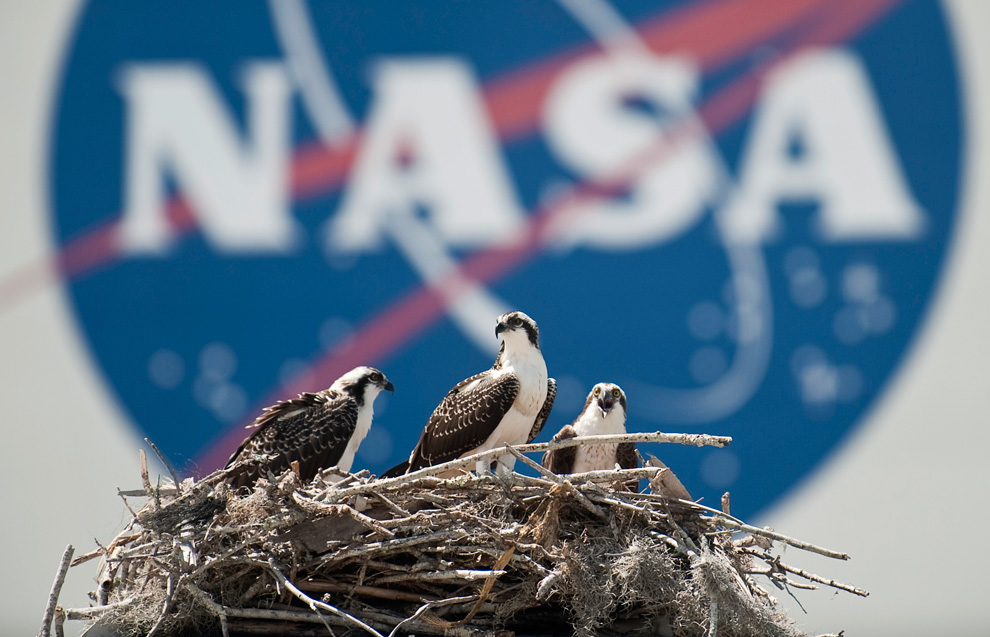
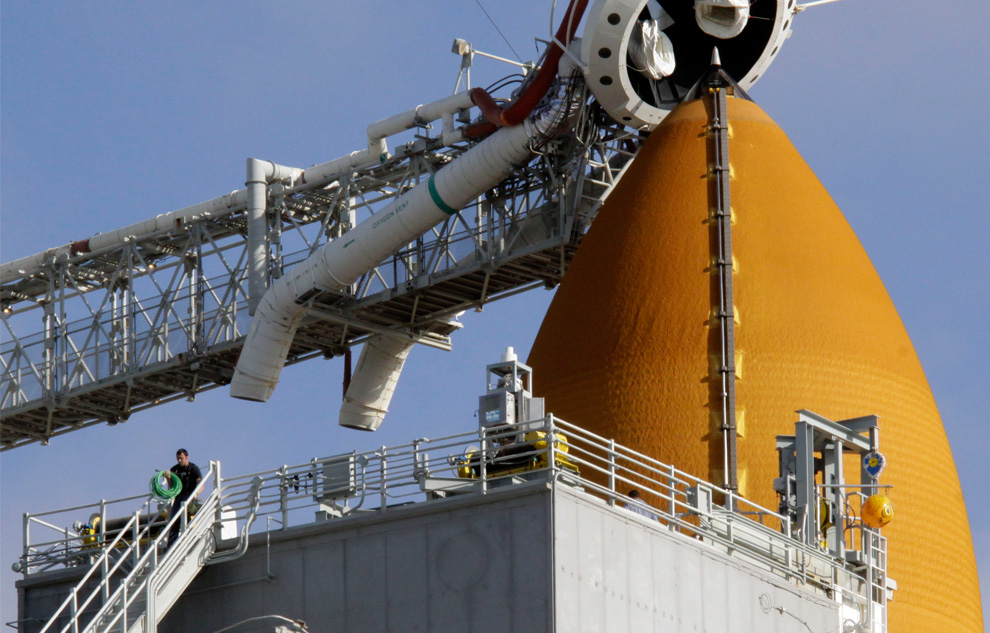
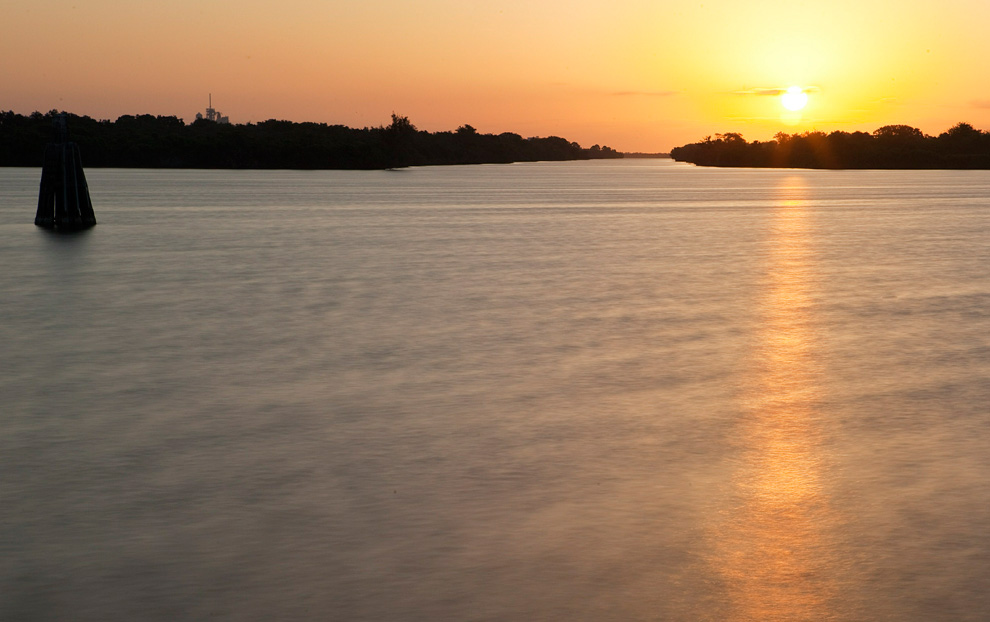

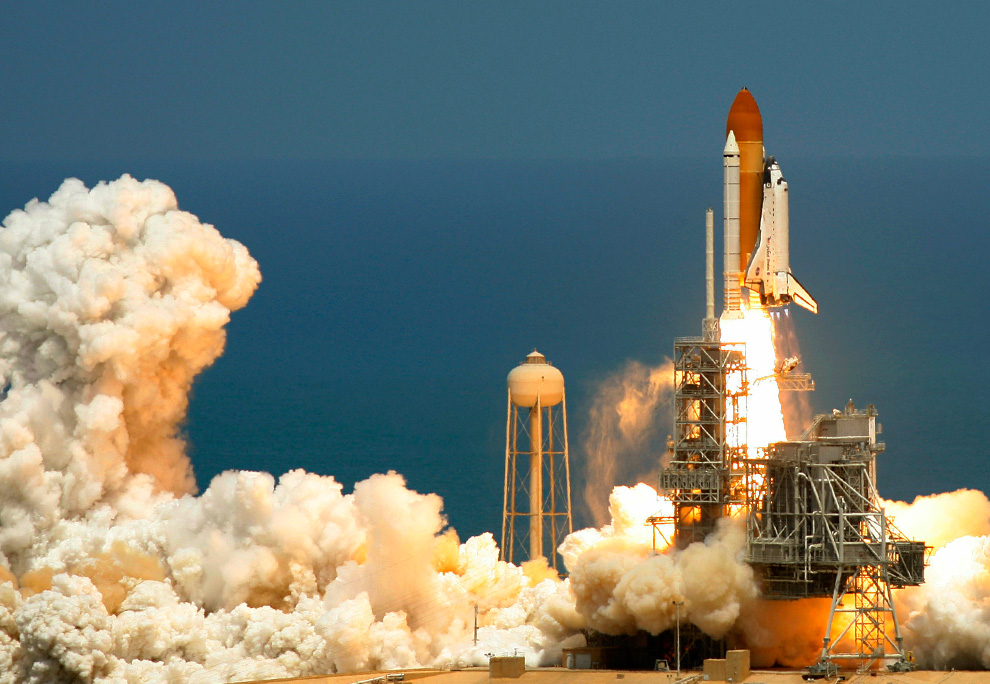

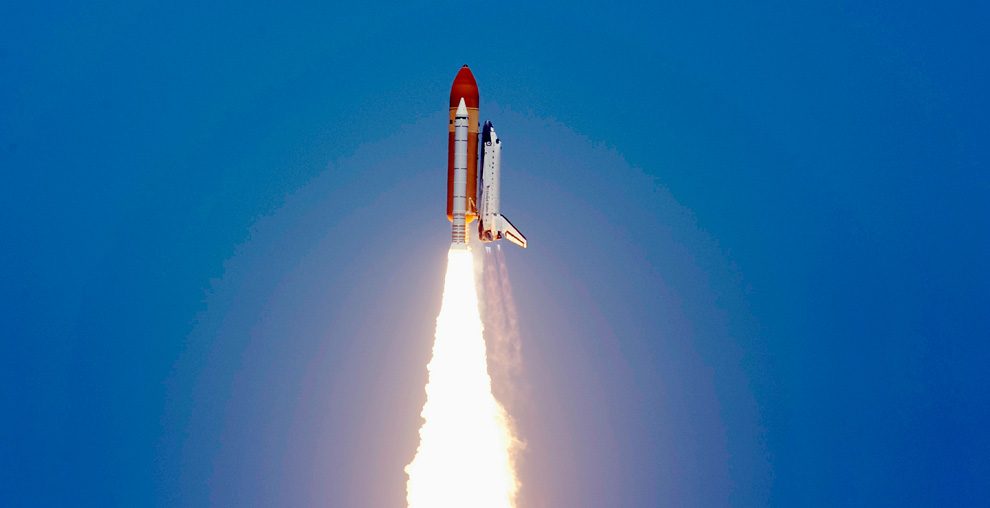
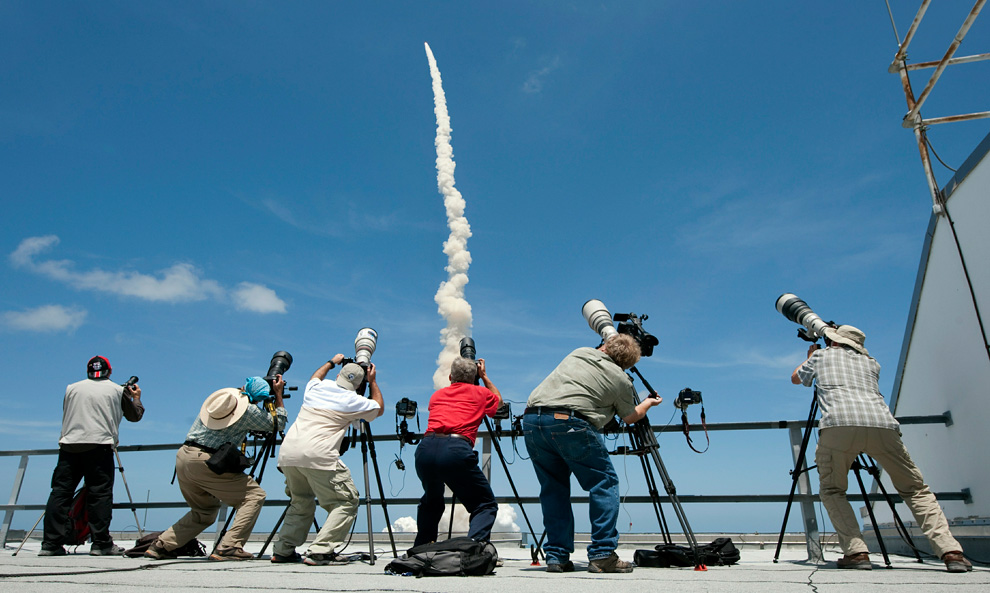
No comments:
Post a Comment